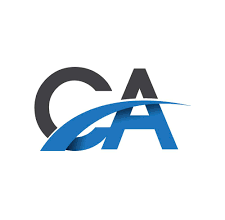School administration software is an indispensable tool for schools and educational institutions to carry out basic functions and administrative tasks in an orderly manner. This article investigates the most famous school management platforms that can be used as open sources in 2024.
What is a School Management System?
The school management software is a platform that provides instant and structured features for managing every aspect of a learning institution from academic to administrative activities. It caters to functions such as student registration, attendance tracking, fee collection, examinations, reporting, and so forth. The software is meant to streamline the school management process and raise productivity.
Benefits of Using Open-Source School Management Software
Here are some of the key advantages of using open-source school management platforms:
Cost-effective: Open-source software can be used and distributed for free. Thanks to this affordability, they are more budget-friendly than proprietary or licensed software.
Customizable: The source code of open-source software is freely accessible. This allows schools to easily customize the system as per their specific needs and requirements. The software can be tailored to fit the specific requirements of the school’s workflow.
User-driven innovation: The open-source society develops these platforms through users’ collective efforts. Schools can choose to use the most recent developments and features that are added by developing communities around the world, mostly free of charge.
No vendor lock-in: For the majority of the time proprietary software limits you to a single vendor. The advantage of open-source platforms is that they are not locked and they have the flexibility to switch among vendors.
Enhanced security: The code is available for inspection and testing by the community. Ultimately this leads to more secure and stronger open-source platforms as opposed to closed-source proprietary software.
Top Open Source School Management Platforms
Some of the popular open-source school management systems used by educational institutions globally include
1. Fedena
Fedena is a free and open-source school management system that was written in Ruby on Rails and includes
- Student Information System to manage student records, profiles, and enrollment
- Examination Management with grad, ebooks, and scorecards
- Attendance tracking and notifications
- Fee collection and accounting
- HR Management module for employee records
- Custom reports builder
- Multi-language support
- API access and integration options
Fedena serves over 7000 schools worldwide and is featured in more than 20 languages. It can be installed on the schools’ servers, or our schools can subscribe to it as SaaS.
2. OpenSIS
An example of an open-source student information system is the OpenSIS which handles tasks such as class schedules, attendance records, health records, grades, transcripts, and student demographics among others.
- Student profiling and admissions
- Attendance tracking with seating charts
- Gradebook, mark entry, and GPAs
- Customizable reports and dashboard
- Parent/student portal access
- Standards-based grading
- Automatic data backups
OpenSIS is used by thousands of schools in over 70 countries. It is web-based, mobile responsive, and customizable using plugins.
3. SchoolTool
SchoolTool is a free and open-source management information system designed for schools globally. It includes modules for
- Demographics – student profiles, contacts, attendance details
- Scheduling – timetables, calendars, academic terms
- Gradebooks – courses, assignments, skill assessment
- Admissions – online registration forms, lottery process
- Finance – invoices, accounting, payment tracking
Written in Python, SchoolTool supports multiple languages and can be installed on Linux systems. It offers integration support via REST APIs.
4. OpenEduCat
OpenEduCat is an enterprise-grade open-source ERP and CRM solution tailored for educational institutions. Key capabilities include
- Student Information System – admissions, profiles, documents
- Human Resources Module – staff records, payroll, leave management
- Academics – courses, batches, timetables
- Examinations – exam schedules, performance analysis
- Hostel Management – room allocation, visitor logs
- Transport monitoring system
- Accounting, assets, library management
- Custom reports, BI analytics
Built on the Ruby on Rails framework, OpenEduCat is free, web-based, mobile-ready, and customizable.
5. Gibbon
Gibbon is an open-source learning platform designed for schools. Its modules support:
- Student profiles and application management
- Staff database with communication tools
- Curriculum builders with lesson planning
- School calendar, events, and activity tracking
- Customizable online assessments
- Parent portal for communication and updates
- Discipline tracking and notification engine
- Finance management and fee collection
- Mobile app for parents, students and staff
Based on the Laravel PHP framework, Gibbon is free and easy to install on your servers.
6. RosarioSIS
RosarioSIS is a free student information system for K12 schools developed using PHP. Key highlights include:
- Demographics – student profiling, contacts, medical history
- Attendance management – record keeping, late arrivals/early dismissals
- Scheduling – rosters, timetables, calendars
- Grading – mark book, GPA calculator, honor rolls
- Parent Access Portal – notifications, report card access
- Discipline – behavior monitoring, detention tracking
- Custom reports, charts, and options to export data
RosarioSIS can be hosted online or on your school’s internal servers.
Key Considerations for Evaluating Open Source School Software
When evaluating open source school management platforms, some of the parameters to consider are:
Features – Assess if all required modules and capabilities are available out-of-the-box or can be customized.
Technology – Evaluate the underlying technology and framework used to develop the software. This impacts extensibility and integration options.
Ease of use – Check the interface, navigation, and ease of accessing/inputting data for users and administrators.
Support – Availability of documentation, guides, training, and community forums for resolving queries.
Security – Review the measures and protocols undertaken for data safety, access control, backups, and disaster recovery.
Scalability – Software should be able to handle increasing data, users, and transactions as the institution grows over time.
Integration – APIs and a built-in integration capability to support connection with third-party software, payment gateways, data analytics, etc.
Deployment – Either on-premise self-hosting or cloud deployment based on the school’s existing IT policy and infrastructure.
Cost – Due to the free or affordable nature of software cost, include other costs for implementation, customization, training, support, hardware, etc.
Conclusion
The adoption of school management software has become an essential tool to streamline administrative duties and enhance productivity. Examples of open-source software that can be implemented include Fedena, OpenSIS, SchoolTool, OpenEduCat, Gibbon, and RosarioSIS which provide robust functions to automate processes at little or no cost.
Schools should keep in mind all the parameters like features, support availability, ease of use, security, integration, and the level of scalability. This guarantees automatic deployment and a good return on investment for the school management system. Proper training and change management is key for successful implementation.
What are some key benefits of open-source school management software?
Some major benefits are cost-effectiveness, customizability, user-driven innovation, no vendor lock-in, enhanced security, and avoiding licensing fees of proprietary software.
What are some top open-source platforms available for schools?
The most prevalent open-source systems used worldwide are fedena, openSIS, SchoolTool, OpenEduCat, Gibbon, and RosarioSIS. They are different from each other with various modules.
What factors, should such software, schools consider?
Key parameters to evaluate are features, UX, technology/framework, support availability, security measures, scalability, integration, deployment options, and total cost of ownership.
Can open-source software be tweaked to fit in a school’s unique requirements?
Yes, as open-source, the code can be modified and plugins/extensions can be added to fine-tune the software to the workflows and requirements of the school.
Do educators need to be technical specialists to operate open-source school software?
The majority of platforms are made for technical staff to operate. For customizations and advanced management, IT skills are beneficial to have. Many also offer paid professional support.




